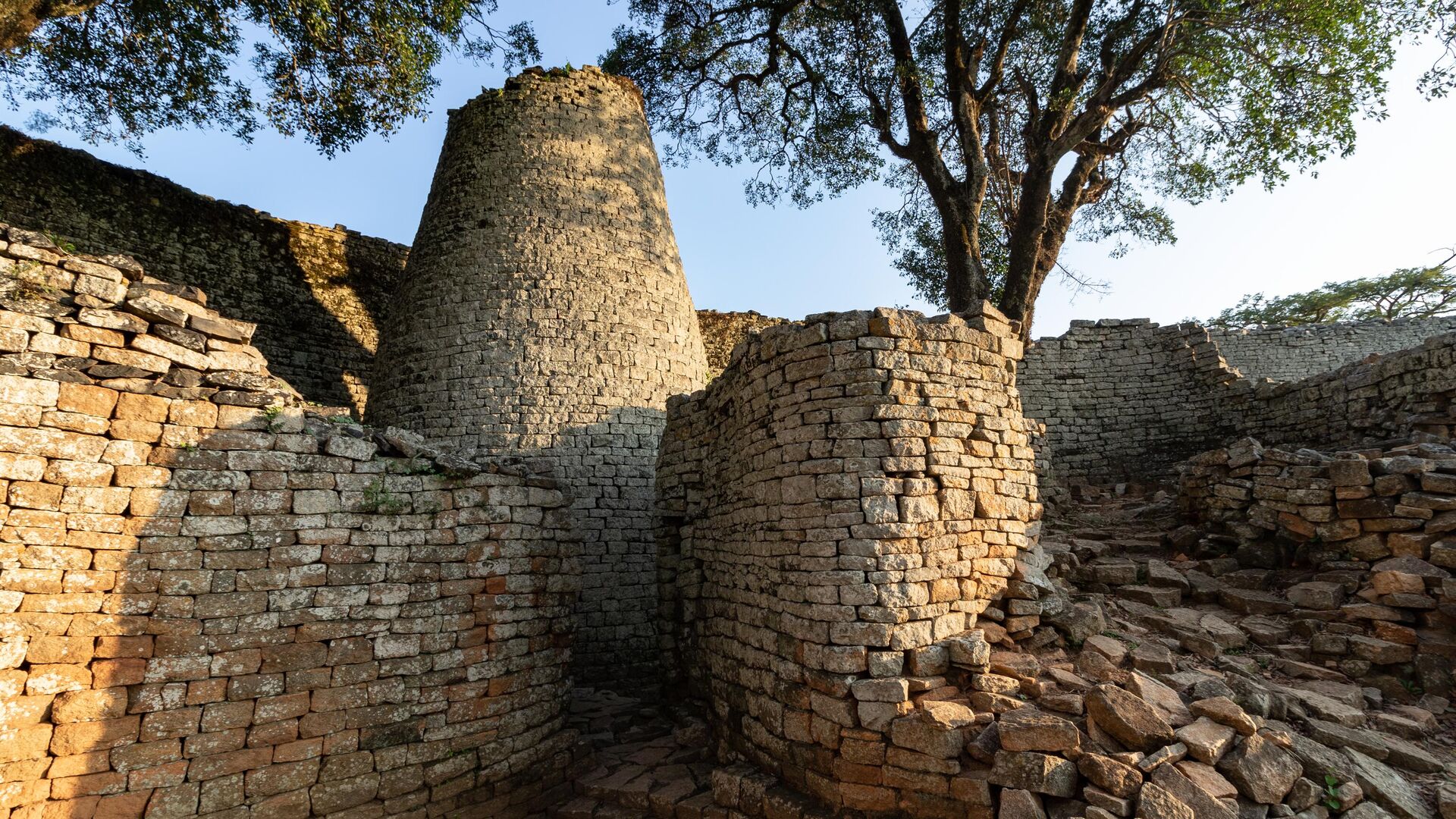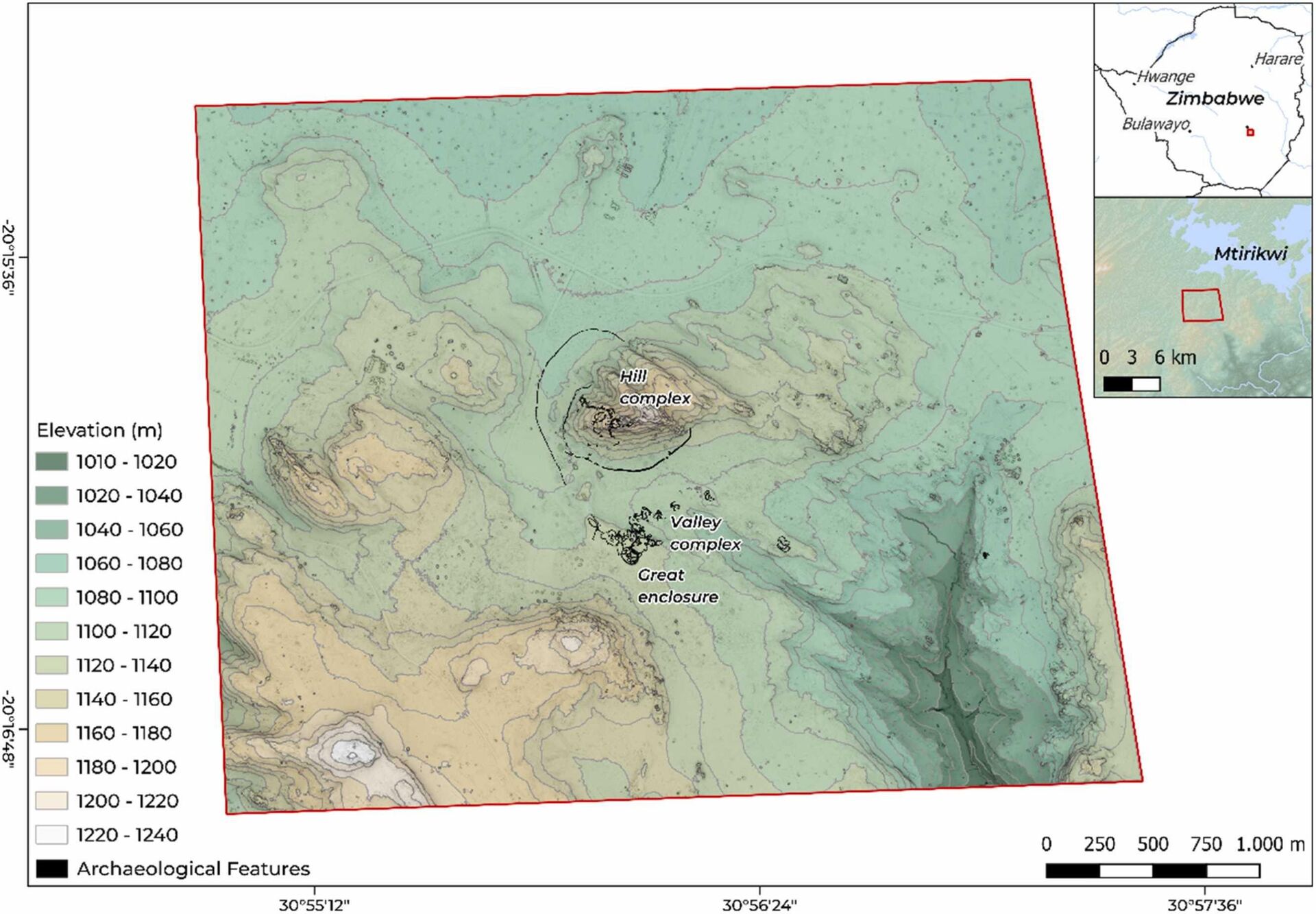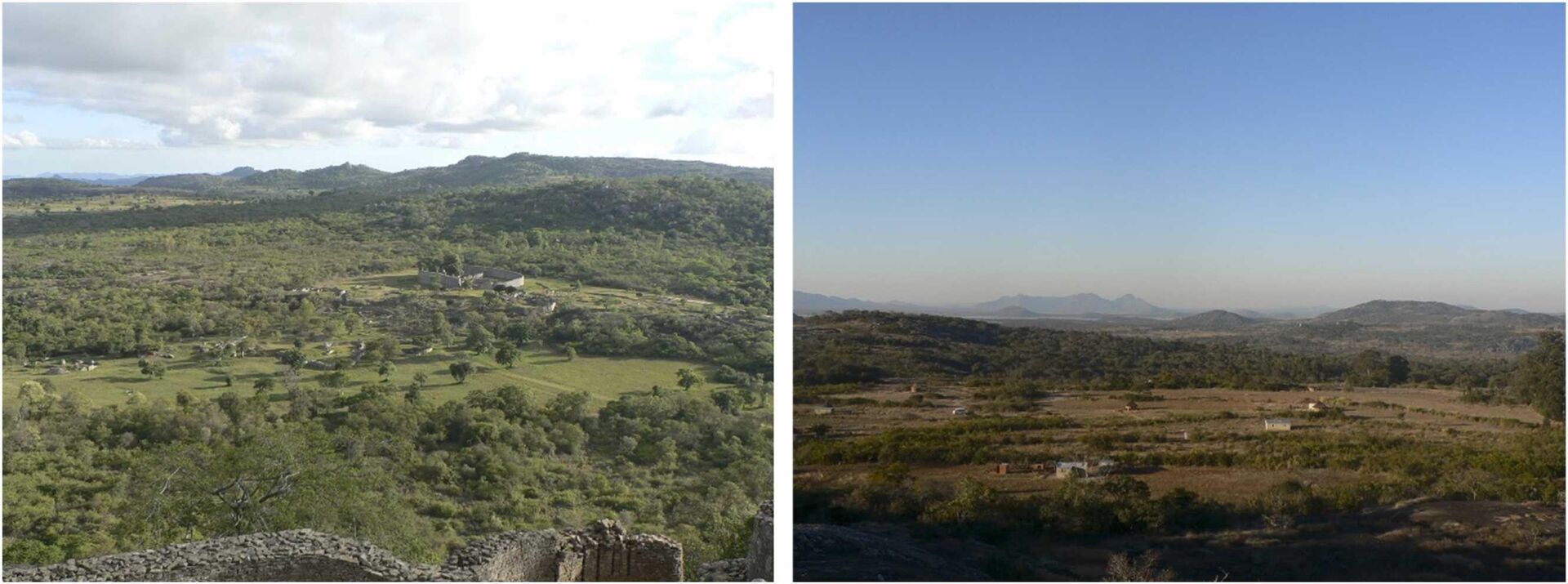https://sputnikglobe.com/20230131/research-shows-how-medieval-zimbabweans-secured-water--tackled-droughts-1106854904.html
Research Shows How Medieval Zimbabweans Secured Water & Tackled Droughts
Research Shows How Medieval Zimbabweans Secured Water & Tackled Droughts
Sputnik International
A series of large, circular depressions known as "dhaka" pits, found around the ruins of Great Zimbabwe, were used for capturing water and can be considered as a medieval system for careful water conservation and improving drought resistence, a recent research has revealed
2023-01-31T14:51+0000
2023-01-31T14:51+0000
2023-02-14T14:11+0000
africa
zimbabwe
water supply
water
middle ages
environment protection
southern africa
drought
https://cdn1.img.sputnikglobe.com/img/07e7/01/1f/1106855771_0:160:3073:1888_1920x0_80_0_0_c7796289cc335660b73a9c8813e3833e.jpg
A series of large, circular depressions known as "dhaka" pits, found around the ruins of Great Zimbabwe, were used for capturing water and could be considered as a medieval system for careful water conservation and improving drought resistance, a recent study has revealed. A group of scientists from South Africa, Zimbabwe, Denmark, and England conducted a research into how inhabitants of the once-thriving metropolis negotiated water security, proving that dhaka pits were not used for digging up clay, as was previously assumed, but for securing water.To arrive at these conclusions, the researchers conducted geoarcheological investigations examining local soil, employed remote sensing, specifically airborne laser scanning to survey the major features of the site and map water resources and reservoirs around Great Zimbabwe.They also carried out ground surveys focused on collecting ethnographic data from local communities and residents who still have to conserve water in this arid region. They talked to elders living at the site and collected information on the types and distribution of water resources, their uses, and management over the years, taking into account related oral histories, traditions, and beliefs. Numerous dhaka pits can be found in the area near hillsides, where they were strategically built to collect rain and groundwater, the researchers stated. Other pits surrounding the city are crossed by streams. Сollecting rainwater and cordoning off some sections of a stream or river, the inhabitants who used to live there could ensure that water for drinking and farming, as well as for ritual and ceremony services, was available throughout the year, even during dry seasons. This idea is supported by the fact, the scientists argued, that the plant residue which was found near the pits usually grows close to rivers or other water sources in areas with high soil moisture.During rainy seasons, some of the areas of Great Zimbabwe were marshy and wet, creating favorable conditions for extracting clay to build houses, while pits served as reservoirs of water, which was obtained from the ground as well as runoffs from surrounding hills.In its heyday, during a period between the 11th and 15th centuries, the medieval city is believed to have served as the location of a royal palace for the local monarch, as well as a home to religious leaders, craftsmen, and traders, all of whom used rainwater and groundwater collected in the pits within this integrated and flexible system. The partially engineered landscape, the scientists highlighted, required maintenance, even though it was organized in "a relatively passive manner as runoff was allowed to wash into these basins." However, the advent of kingship and emergence of ruling elites as a social institution "initiated significant social complexity" and facilitated major architectural changes, in particular water conserving facilities. For now, not much is known about the history of Great Zimbabwe. Its rise, development and demise fall within periods associated with both wetter and drier climatic conditions, known as the Medieval Climatic Anomaly (950–1250) and the Little Ice Age (1300–1850). The researchers assumed that its demise could be linked to climate change despite such a carefully coordinated water system, but also didn't exclude economic and political issues.The authors of the paper underlined the importance of their research, citing contemporary human-environmental challenges in sub-Saharan Africa, where accelerating urbanization creates major threats to water availability and supply. Therefore, understanding past water management in such water-scarce regions is crucial in terms of drawing lessons from the past and enhancing current efforts aimed at countering climate change effects.
https://sputnikglobe.com/20230111/the-cost-of-climate-change-over-120-billion-in-insurance-covered-losses-reported-in-2022-alone-1106211747.html
africa
zimbabwe
southern africa
Sputnik International
feedback@sputniknews.com
+74956456601
MIA „Rossiya Segodnya“
2023
News
en_EN
Sputnik International
feedback@sputniknews.com
+74956456601
MIA „Rossiya Segodnya“
Sputnik International
feedback@sputniknews.com
+74956456601
MIA „Rossiya Segodnya“
southern africa, great zimbabwe, zimbabwe, research, middle ages, drought, rainy seasons, climate change
southern africa, great zimbabwe, zimbabwe, research, middle ages, drought, rainy seasons, climate change
Research Shows How Medieval Zimbabweans Secured Water & Tackled Droughts
14:51 GMT 31.01.2023 (Updated: 14:11 GMT 14.02.2023) Great Zimbabwe, a medieval city in the southeastern hills of modern Zimbabwe, was the first large city in southern Africa, whose construction started in the 9th century and continued until its demise in the 15th century. Its decay was thought to be linked with droughts and climate change, but new evidence may question that theory.
A series of large, circular depressions known as "dhaka" pits, found around the ruins of Great Zimbabwe, were used for capturing water and could be considered as a medieval system for careful water conservation and improving drought resistance, a recent
study has revealed.
A group of scientists from South Africa,
Zimbabwe, Denmark, and England conducted a research into how inhabitants of the once-thriving metropolis negotiated water security, proving that dhaka pits were not used for digging up clay, as was previously assumed, but for securing water.
To arrive at these conclusions, the researchers conducted geoarcheological investigations examining local soil, employed remote sensing, specifically airborne laser scanning to survey the major features of the site and map water resources and reservoirs around Great Zimbabwe.
They also carried out ground surveys focused on collecting ethnographic data from local communities and residents who still have to conserve water in this arid region. They talked to elders living at the site and collected information on the types and distribution of water resources, their uses, and management over the years, taking into account related oral histories, traditions, and beliefs.
Numerous dhaka pits can be found in the area near hillsides, where they were strategically built to collect rain and groundwater, the researchers stated. Other pits surrounding the city are crossed by streams.
Сollecting rainwater and cordoning off some sections of a stream or river, the inhabitants who used to live there could ensure that water for drinking and farming, as well as for ritual and ceremony services, was available throughout the year, even during dry seasons. This idea is supported by the fact, the scientists argued, that the plant residue which was found near the pits usually grows close to rivers or other water sources in areas with high soil moisture.
"Given the urban context of Great Zimbabwe, a city that also experienced climate change for much of its existence, the dhaka pits were likely part of an integrated approach towards water conservation not only to meet water supply needs of its population, but also for sustainable agriculture," the research paper read.
During rainy seasons, some of the areas of Great Zimbabwe were marshy and wet, creating favorable conditions for extracting clay to build houses, while pits served as reservoirs of water, which was obtained from the ground as well as runoffs from surrounding hills.
In its heyday, during a period between the 11th and 15th centuries, the medieval city is believed to have served as the location of a royal palace for the local monarch, as well as a home to religious leaders, craftsmen, and traders, all of whom used rainwater and groundwater collected in the pits within this integrated and flexible system.
The partially engineered landscape, the scientists highlighted, required maintenance, even though it was organized in "a relatively passive manner as runoff was allowed to wash into these basins." However, the advent of kingship and emergence of ruling elites as a social institution "initiated significant social complexity" and facilitated major architectural changes, in particular water conserving facilities.
For now, not much is known about the history of Great Zimbabwe. Its rise, development and demise fall within periods associated with both wetter and drier climatic conditions, known as the Medieval Climatic Anomaly (950–1250) and the Little Ice Age (1300–1850). The researchers assumed that its demise could be linked to climate change despite such a carefully coordinated water system, but also didn't exclude economic and political issues.
The authors of the paper underlined the importance of their research, citing contemporary human-environmental challenges in sub-Saharan Africa, where accelerating urbanization creates major threats to water availability and supply. Therefore, understanding past water management in such water-scarce regions is crucial in terms of drawing lessons from the past and enhancing current efforts aimed at countering
climate change effects.

11 January 2023, 02:58 GMT





